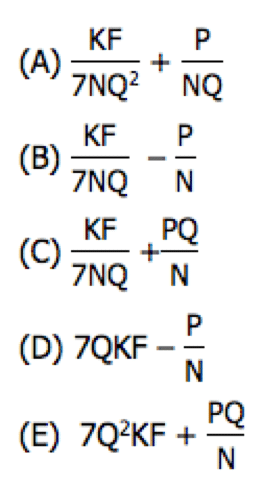After answering a question on GMAT Club, I realized that one type of error is not on every student’s radar. Many students are attuned to parallelism and are vigilant about eradicating modification errors. Same goes for the more typical grammar errors—students know about subject-verb agreement and pronoun-antecedent agreement.
But double negatives have floated below the radar for students, so I’d like to take this opportunity to talk about double negatives. I’ll start by talking generally about negative words, and then I will move into the particulars of double negatives.
Negative Words
Negative words in English reverse the meaning of other words. In some languages, negation requires negative words and a change to the verb. But in English, we only need a negative word.
These negatives can apply to nouns, verbs, and adverbs, and, as such, can create a little ambiguity. But that’s for another post.
No and not are the most common negative words. Others include nobody, nothing, and never. When using negative words, we don’t have to include no or not. These words alone reverse the meaning.
Using nobody, nothing, and never is quite strong and emphatic. To soften our sentences, we can use alternate forms that have the same meaning, such as not anybody, not anything, and not ever.
One quick rule about negatives—at the beginning of a clause, use the negative words nobody, nothing, and never. Don’t use the alternate forms with not.
- Not anything is clear.
- Nothing is clear.
- Not anybody cares.
- Nobody cares.
Double Negatives
When someone uses two or more negative words in a sentence, it’s called a double negative.
This is one of the neater rules in English grammar: Negative words follow the same rules of positive and negative integers in multiplication. Multiply two negative numbers together, and the answer is positive. Use two negative words in a sentence, and the sentence has a positive meaning. We can continue with this logic too. Three negatives leads to a negative meaning. 🙂
Let’s compare the difference between these two sentences:
- Do nothing. (Don’t act.)
- Don’t just do nothing. We need help. (Don’t just sit there!)
In the first sentence, the command is to not help or act. In the next sentence, the meaning changes. We now have a positive sentence, and we are implored to help.
In general, double negatives are considered incorrect in formal situations—academic essays, GMAT essays, and Sentence Correction questions. But as with most “rules” in English grammar, exceptions exist.
Double negatives can be used for special stylistic effect in literature or in spoken English. Although, when spoken, it tends to sound old fashioned or unnatural. But even then, sounding old fashioned might be funny, so a double negative can also be used for comedic effect.
Imagine saying this, or even writing it:
- Not every day am I not allowed to not eat my breakfast in peace.
The meaning of this sentence is hard to wade through. There is a better ways to say this—a more concise and direct way.
- Rarely am I not eating my breakfast in peace.
But notice the comedy in this song lyric from “Nobody” written by Bert Williams:
- I ain’t never done nothing to nobody, and I ain’t never got nothing from nobody no time.
The song lyric wouldn’t be as memorable or impactful if it were written:
- I never did anything to a person, and I will not get anything from a person at any time.
GMAT Sentence Correction
Double negatives are incorrect on the GMAT so avoid any answer choice that leads to a double negative construction.
The GMAT is not concerned with the possible humor in double negatives, nor is it concerned with possible stylistic effects. We know that the GMAT wants precise word choice, concise sentences, and formal diction. Double negatives are too informal.
In the 13th edition of The Official Guide to the GMAT, double negatives appear in one question, so it’s not as popular as the tested idiom not only…but also, but it is a testable concept.
Question 21 in Sentence Correction contains a list of three items. At the beginning of the list is a not—“do not contain…” One key to this question is noticing not and choosing an answer choice that does not contain another negative word, such as “nothing.” One of the splits in this question involves a double negative, and knowing that, gets you closer to the correct answer. 🙂
Takeaway
Once you know to about double negatives, they are easy to identify, and as such, are easy to eliminate as possible answer choices. Feel free to play around with them in your speech or song lyrics, but when you need to write an academic essay, don’t use them. 🙂





